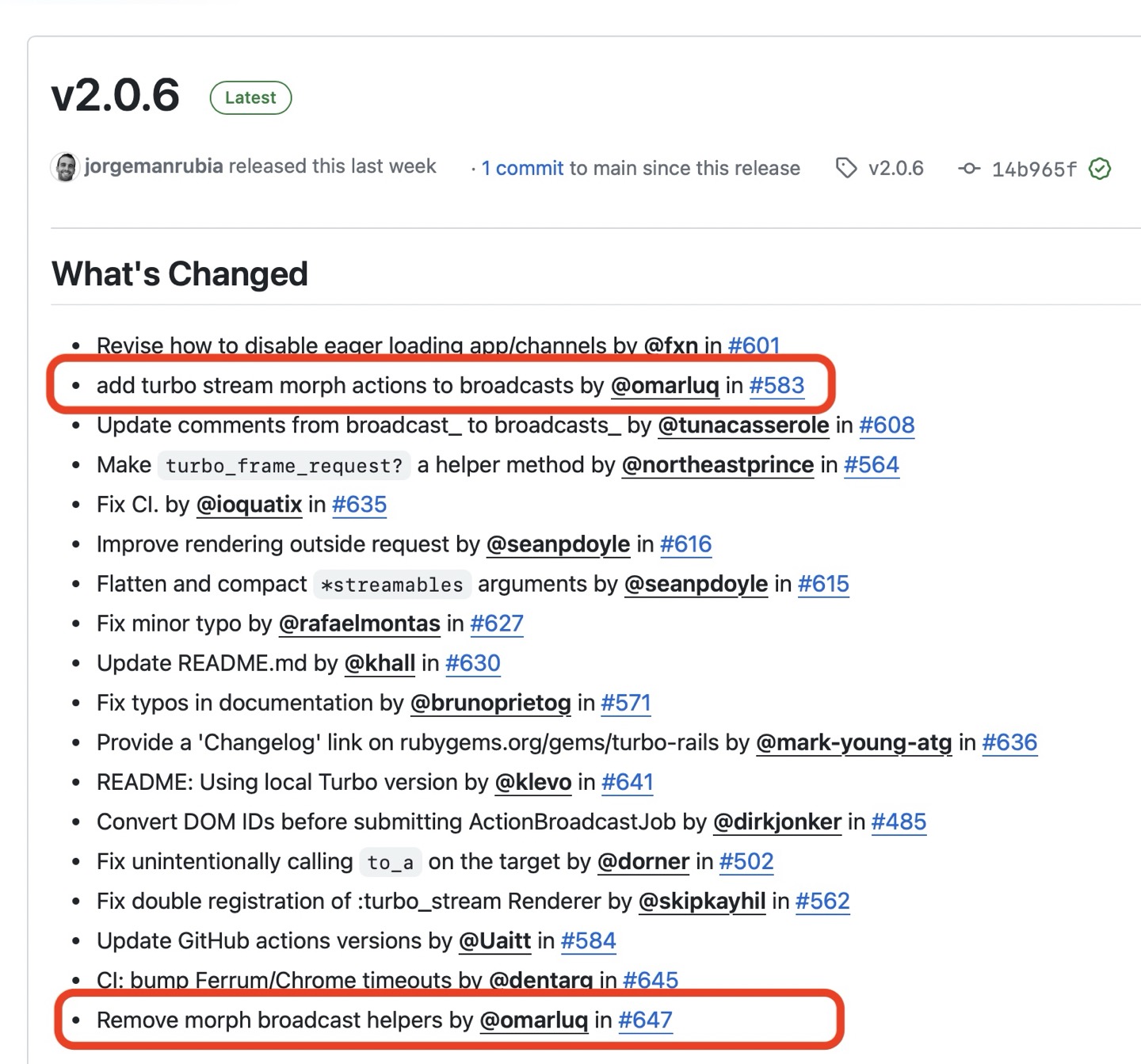What one must pass to includes() to include Active Storage attachments
If you're using Active Storage, eager-loading nested associations that contain attachments in order to avoid the "N + 1" query problem can quickly reach the point of absurdity.
Working on the app for Becky's strength-training business, I got curious about how large the array of hashes being sent to the call to includes() is whenever the overall strength-training program is loaded by the server. (This only happens on a few pages, like the program overview page, which genuinely does contain a boatload of information and images).
Each symbol below refers to a reference from one table to another. Every one
that descends from :file_attachment is a reference to one of the tables
managed by Active Storage for
keeping track of cloud-hosted images and videos. Those hashes were extracted
from the
with_all_variant_records scope that Rails provides.
I mean, look at this:
[{:overview_video=>
{:file_attachment=>
{:blob=>
{:variant_records=>{:image_attachment=>:blob}, :preview_image_attachment=>{:blob=>{:variant_records=>{:image_attachment=>:blob}}}}}}},
{:overview_thumbnail=>
{:file_attachment=>
{:blob=>
{:variant_records=>{:image_attachment=>:blob}, :preview_image_attachment=>{:blob=>{:variant_records=>{:image_attachment=>:blob}}}}}}},
{:warmup_movement=>
{:movement_video=>
{:file_attachment=>
{:blob=>
{:variant_records=>{:image_attachment=>:blob}, :preview_image_attachment=>{:blob=>{:variant_records=>{:image_attachment=>:blob}}}}}},
:movement_preview=>
{:file_attachment=>
{:blob=>
{:variant_records=>{:image_attachment=>:blob}, :preview_image_attachment=>{:blob=>{:variant_records=>{:image_attachment=>:blob}}}}}}}},
{:workouts=>
{:blocks=>
{:mobility_movement=>
[{:primary_equipment=>
{:equipment_image=>
{:file_attachment=>
{:blob=>
{:variant_records=>{:image_attachment=>:blob},
:preview_image_attachment=>{:blob=>{:variant_records=>{:image_attachment=>:blob}}}}}}},
:secondary_equipment=>
{:equipment_image=>
{:file_attachment=>
{:blob=>
{:variant_records=>{:image_attachment=>:blob},
:preview_image_attachment=>{:blob=>{:variant_records=>{:image_attachment=>:blob}}}}}}},
:tertiary_equipment=>
{:equipment_image=>
{:file_attachment=>
{:blob=>
{:variant_records=>{:image_attachment=>:blob},
:preview_image_attachment=>{:blob=>{:variant_records=>{:image_attachment=>:blob}}}}}}},
:movement_video=>
{:file_attachment=>
{:blob=>
{:variant_records=>{:image_attachment=>:blob},
:preview_image_attachment=>{:blob=>{:variant_records=>{:image_attachment=>:blob}}}}}},
:movement_preview=>
{:file_attachment=>
{:blob=>
{:variant_records=>{:image_attachment=>:blob},
:preview_image_attachment=>{:blob=>{:variant_records=>{:image_attachment=>:blob}}}}}}}],
:exercises=>
{:exercise_options=>
{:movement=>
[{:primary_equipment=>
{:equipment_image=>
{:file_attachment=>
{:blob=>
{:variant_records=>{:image_attachment=>:blob},
:preview_image_attachment=>{:blob=>{:variant_records=>{:image_attachment=>:blob}}}}}}},
:secondary_equipment=>
{:equipment_image=>
{:file_attachment=>
{:blob=>
{:variant_records=>{:image_attachment=>:blob},
:preview_image_attachment=>{:blob=>{:variant_records=>{:image_attachment=>:blob}}}}}}},
:tertiary_equipment=>
{:equipment_image=>
{:file_attachment=>
{:blob=>
{:variant_records=>{:image_attachment=>:blob},
:preview_image_attachment=>{:blob=>{:variant_records=>{:image_attachment=>:blob}}}}}}},
:movement_video=>
{:file_attachment=>
{:blob=>
{:variant_records=>{:image_attachment=>:blob},
:preview_image_attachment=>{:blob=>{:variant_records=>{:image_attachment=>:blob}}}}}},
:movement_preview=>
{:file_attachment=>
{:blob=>
{:variant_records=>{:image_attachment=>:blob},
:preview_image_attachment=>{:blob=>{:variant_records=>{:image_attachment=>:blob}}}}}}}]}}}}}]
By my count, that's 167 relationships! Of course, in practice it's not quite this bad since the vast majority are repeated, and as a result this winds up executing "only" 50 queries or so. But that's… a lot!






